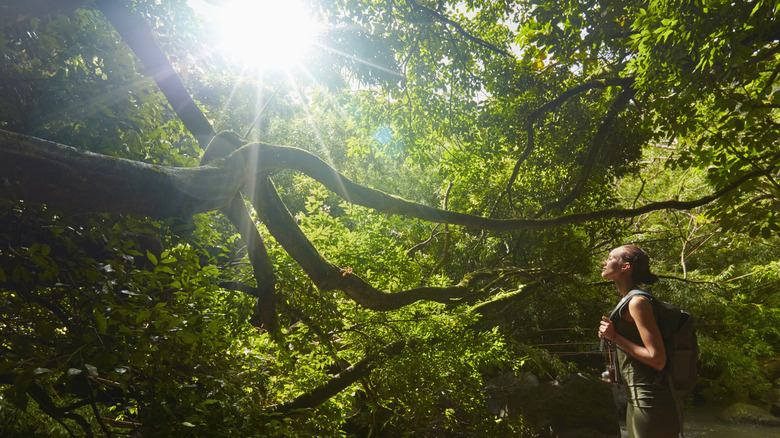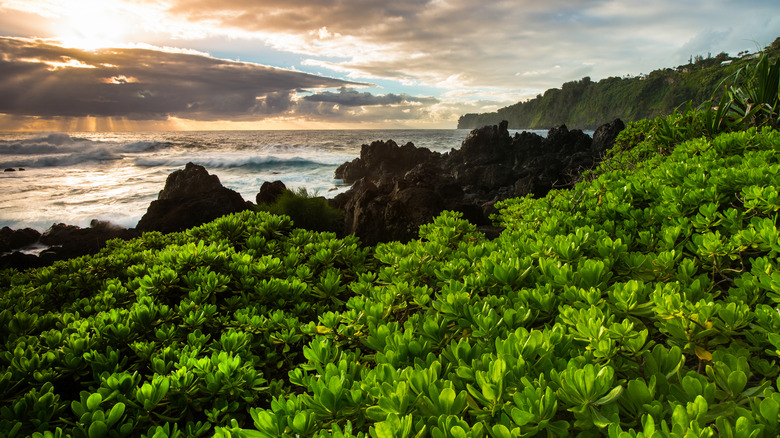Hawaii's Picturesque Forest Reserve Is An Uncrowded Gem Where Lush Hiking Trails Abound
Tucked away in the Big Island's wild east coast, the Hilo Forest Reserve remains a hidden gem in Hawaii that only locals know about. Far less crowded than the popular hiking trails in Oahu and Maui, the reserve, established in 1905, covers approximately 64,000 acres of lush rainforest, alive with native flowers and forest birds. You are in an authentic wilderness here, left to explore the shady paths under a thick tropical canopy in pristine solitude.
Before the protection, wide swaths were being cleared at an alarming pace for cattle grazing, which introduced non-native weeds and upset the natural balance of the land. From a technical standpoint, the forest reserve is designed to protect the watershed contributing to the supply of safe water for inhabitants and for cultivation. An additional plan is for the reserve to help mitigate climate change and become a carbon sink by 2045. Its scope, however, is much wider than that. For native Hawaiians, with a culture closely linked to nature, there is an added dimension in protecting the forest that extends to all living things, including species such as the 'io or Hawaiian hawk, traditionally seen as a guardian of spirits.
A large portion of the reserve is also dedicated to recreation, from traditional and cultural practices to hiking. Fed by the generous rainfall, the fragrant undergrowth is carpeted with verdant ferns and tiny orchids. This is a haven for nature lovers, bird watchers, and enthusiasts of sylvotherapy, also known as forest bathing — a mindful practice of intentionally reconnecting with your natural surroundings. Underrated attractions like these are rare, so make sure the Hilo Forest Reserve is on your Hawaii bucket list.
Preparing your visit to the Hilo Forest Reserve
The Hilo Forest Reserve is spread across a large swath of the northeast region of the Big Island, so you'll need to monitor the weather before heading out and keep a reliable GPS with you. There are short, family-friendly loops and more adventurous trails to choose from. While a number of sections are easily accessible, expect narrow roads — access to some trails may even require a four-wheel-drive vehicle. The Hawaii Division of Forestry and Wildlife offers the free Outerspatial app, which provides detailed information for a safe adventure.
If you are ready for total immersion, hikers wishing to stay overnight can take shelter at the Keanakolu Bunkhouse and Ranger Cabins at an altitude of 5,300 feet, which were originally built in the 1930s for the conservation staff. Note that there is no running water or electricity in the cabins, and that this is indeed one of the trails where you'll need your four-wheel-drive to gain access. You will also need a permit and a reservation to stay. Also, if you are visiting between June and October, make sure to get a permit for the fruit orchard, so you can pick your own luscious apples, plums, and pears.
Because of the rain, the trails can get slick and muddy, so pack waterproof hiking footwear and rain gear. Locals invite visitors to be "pono" (virtuous), so stay on the marked trails to be a respectful tourist in Hawaii: Take only memories and leave only footprints. Don't forget to bring your binoculars and keep your eyes peeled to see if you can spot the 'io, guardian of spirits.

